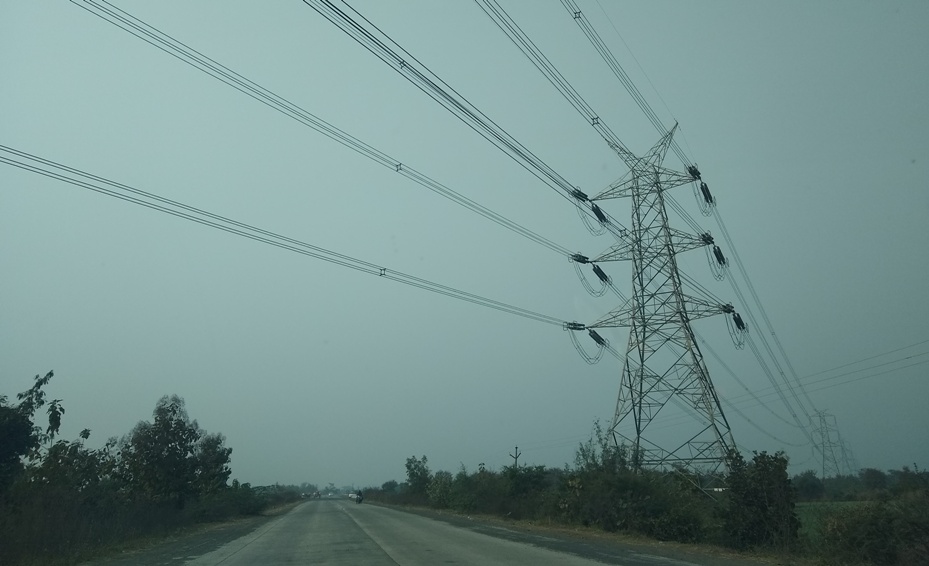The draft National Electricity Plan (NEP) has envisaged investment of around Rs.4.76 trillion in the power transmission sector during the five-year period from FY23 to FY27.
Prepared by Central Electricity Authority (CEA), “National Electricity Plan (Draft): Volume II – Transmission,” the document is currently open for public comments before it is finalized.
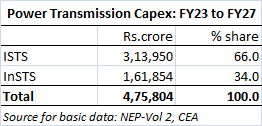 The document has envisages total capital expenditure worth Rs.4,75,804 crore in the power transmission sector during the five-year period from FY23 to FY27.
The document has envisages total capital expenditure worth Rs.4,75,804 crore in the power transmission sector during the five-year period from FY23 to FY27.
Out of this, Rs.3,13,950 crore (or 66 per cent) would be towards the interstate state transmission system (ISTS) network while the remaining Rs.1,61,854 crore (or 34 per cent) would go towards the intrastate transmission system (InSTS).
In terms of physical infrastructure, a total of 1,23,577 ckm of transmission lines and 7,22,940 MVA of transformation capacity has been targeted for addition in the FY23-FY27 period. It may be noted that the transformation capacity includes 12,000 mw of transfer capacity to be achieved with HVDC-bipole transmission infrastructure.
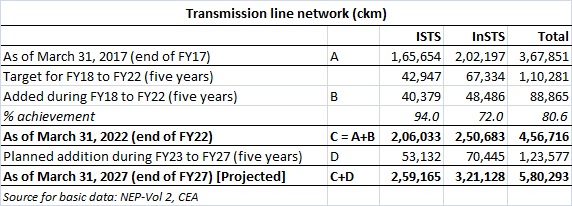
Performance in FY18-FY22 period
During the five-year period from FY18 to FY22, a total of 1,10,281 ckm of transmission lines were expected to be added. Against this, the actual achievement was 80.6 per cent, or 88,865 ckm. The shortfall was more due to under-achievement on the InSTS side. In terms of ISTS lines, the target achievement was 94 per cent.
Speaking of substation capacity, the overall achievement was healthier, standing at 94.8 per cent. In fact, transformation capacity addition on the ISTS side exceeded the planned addition. In terms of InSTS-based substation capacity, the achievement was 87.7 per cent.
The NEP draft document observes that some planned transmission systems got delayed because of right-of-way (RoW) issues, non-availability or delay in getting forest clearance, contractual issues, delay in land acquisition for substations, COVID-19 pandemic, etc.
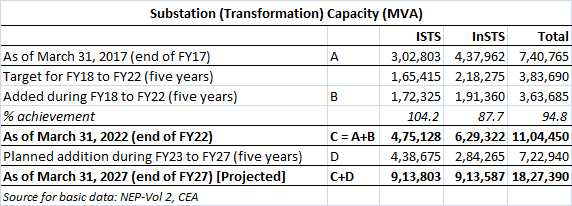
Target for FY23-FY27 period
As discussed above, a total of 1,23,577 ckm of transmission lines and 7,22,940 MVA of substation capacity have been envisaged for addition in the five-year period from FY23 to FY27. The transmission line target includes 53,132 ckm for ISTS and 70,445 ckm for InSTS. It may be mentioned that since ISTS lines are of the high-voltage type – 400kV, 765kV and even 800kV (HVDC) – they can achieve much higher transfer capacity even with significantly lower circuit length. This is best understood from the fact that transformation capacity envisaged by ISTS is 4,38,675 MVA, against a much smaller 2,84,265 MVA on the InSTS side.
In fact, ISTS-related transformation capacity envisaged for addition in the FY23-FY27, which stands at 4,38,675 MVA, is comparable to the 4,75,128 MVA that existed as of March 31, 2022. In other words, near-doubling of ISTS transformation capacity is envisaged during the FY23-FY27 period.
By March 31, 2027, India’s total transformation capacity is targeted to reach 18,27,390 MVA, almost equally distributed between the ISTS and InSTS grids.
Achievement so far
Of the five-year period from FY23 to FY27, actual performance is available for the period April 1, 2022 to October 31, 2023. This roughly stands for one-third of the total five-year period. The actual addition in this period has been 21,651 ckm of transmission lines and 1,05,423 MVA of substation capacity. Much of the substation capacity addition has been on the InSTS side.
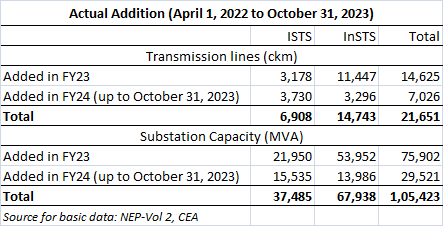
Also read: National Electricity Plan: 2022-32 Notified
Note: Transmission infrastructure (transmission lines and substations) of voltage 220kV or higher only has been considered. Financial year notation: For example, FY18 refers to the financial year ending March 31, 2018, covering the period April 1, 2017 to March 31, 2018.


